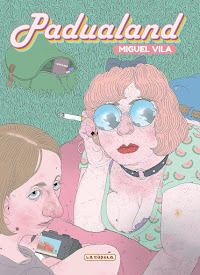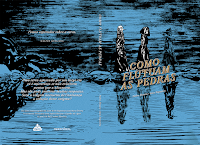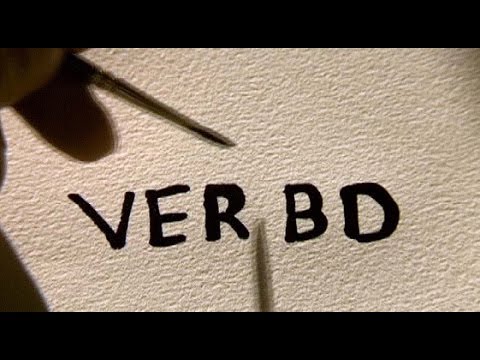 Por ocasião do simpósio internacional que comemora o 50º aniversário da Society for the History of Technology, realizado em Lisboa, foi organizado um painel que discute a ficção científica, a banda desenhada, e as suas relações com o pensamento científico, tecnológico, e ainda as suas dimensões históricas. Esta acção foi coordenada com o Festival Internacional de Banda Desenhada da Amadora. Foi-me feito o convite para participar, que aceitei de bom grado e com prazer. Cada participante (três, uma vez que o autor Luís Differ viu-se impossibilitado de participar) tinha cerca de 10 minutos para fazer uma pequena apresentação, em língua inglesa, à qual se seguiu uma sessão de perguntas e respostas.
Por ocasião do simpósio internacional que comemora o 50º aniversário da Society for the History of Technology, realizado em Lisboa, foi organizado um painel que discute a ficção científica, a banda desenhada, e as suas relações com o pensamento científico, tecnológico, e ainda as suas dimensões históricas. Esta acção foi coordenada com o Festival Internacional de Banda Desenhada da Amadora. Foi-me feito o convite para participar, que aceitei de bom grado e com prazer. Cada participante (três, uma vez que o autor Luís Differ viu-se impossibilitado de participar) tinha cerca de 10 minutos para fazer uma pequena apresentação, em língua inglesa, à qual se seguiu uma sessão de perguntas e respostas.
Uma vez que havia pouco tempo, e importava(-me) mais procurar em que é que a banda desenhada pdoeria contribuir num simpósio de historiadores de ciência, isto é, onde se cruza uma disciplina das humanidades que impõe um discurso de uma "verdade de subjectividade humana" e outras das ciências, a qual é antes de uma "verdade factual e objectiva", elegi uma matéria específica e não global. Aqui vos deixo o texto tal qual o li, warts and all...:
As Baudelaire wrote, “Imagination is the queen of the truth, and the possible is one of its provinces.” This possible can only be understand as such in relation to the tangible, empirical world, but within the fiction world of comics, it is virtual, that is to say, it is real within it.
One way of approaching the theme of this conference and comics would be, for instances, that of the use of recent technology for or in the creation of comics – which would lead us to an entirely different approach, to wit, that of its reproducibility, the revisitation and recreation of the memory of comics as a form of art, and so on. However, we will circumscribe our approach to the use of the imagination within comics under the notion of technology and science.
Science fiction is a very interesting composed word. It almost sounds as an oxymoron, mixing two seemingly antagonistic things: if it’s fiction, it is not fact, and science is based on facts, even if these facts have solely a mathematical (mental) form. Science fiction has been with comics ever since they began, with Monsieur Pencil (1840) by Rodolphe Töpffer (even if you only accept Töpffer as the so-called “father of comics” to avoid further discussion at this moment). But it was mostly used for humour purposes, and criticism of societal blindness and prejudice, just has it had happened in Literature, with Cyrano de Bergerac’s L'Histoire comique des États et Empires de la Lune(1655), Voltaire’s Micrómegas (1752), or even Swift’s Gulliver’s Travels (1726).
I am not going to do a history of science fiction on comics, which would take too long, not to mention that, to be honest, it would be boring. Everyone knows about Buck Rogers and Flash Gordon, and all that, anyway.
This is to say that I could refer to a handful of authors who work on science fiction comics, understanding this concept as amply as possible, in order to include whatever other subgenres one would come across, such as “steam punk” or “science heroes”. Alan Moore would be a major star in this constellation, for instance.
I’ll be very brief but I hope that some ideas can be seen as useful for our discussion.
So, not only as a way of being a concise and direct, but also as an exercise of focalization, I would like to talk mainly of the experience of two comics authors, the Scottish writer Grant Morrison and the British writer Warren Ellis. Both of them work mainly for mainstream or midstream comics in the United States. I’ll go straight on to the works they’ve done which seem to be of interest for this occasion.
 Grant Morrison is the creator of very, very weird comics. Although he works mainly today in mainstream publishers, including creating stories for household name characters such as Superman or Batman, he comes up with very strange storylines, using not only a good knowledge of comics history and pulp fiction, but also a bunch of free-floating references from anarchist literature, conspiracy theories, new age philosophies, Chinese divination systems, the Tarot, tantric sex magic and whatnot… He has explored realms of weird, fringe science in titles such as The Invisibles, The Filth, Animal Man, Doom Patrol, Seaguy, Vimanarama (which one can describe as Hindu Supergods Science Fiction) and We3 (which eventually will turn into a movie, and is about the conversion of pets into incredibly deadly war machines by the American military). Morrison works within the parameters of a fringe science concept in any given title, taking it to its last consequences. For instances, in Animal Man, the main character is able to tap into the “morphogenetic fields” of every single species. The notion of morphogenetic fields was proposed by Rupert Sheldrake but they are not mainstream science. Doom Patrol is about a group of extremely strange superheroes (stranger than the usual, that is, whether of the briefs-over-pants category like Superman or the angst-ridden teenage mutants like the X-men family), and their leader is always pushing the limit of both chaos and catastrophe theories. His Joker (Batman’s nemesis) was portrayed as someone who actually was supersane, and multiple personality disorder is seen as something good for our behaviour in the future, not as a hindrance. In one or two stories, he uses the concepts of Explicit and Implicit Order by David Böhm to explain the strange phenomena that happens to his characters and their worlds.
Grant Morrison is the creator of very, very weird comics. Although he works mainly today in mainstream publishers, including creating stories for household name characters such as Superman or Batman, he comes up with very strange storylines, using not only a good knowledge of comics history and pulp fiction, but also a bunch of free-floating references from anarchist literature, conspiracy theories, new age philosophies, Chinese divination systems, the Tarot, tantric sex magic and whatnot… He has explored realms of weird, fringe science in titles such as The Invisibles, The Filth, Animal Man, Doom Patrol, Seaguy, Vimanarama (which one can describe as Hindu Supergods Science Fiction) and We3 (which eventually will turn into a movie, and is about the conversion of pets into incredibly deadly war machines by the American military). Morrison works within the parameters of a fringe science concept in any given title, taking it to its last consequences. For instances, in Animal Man, the main character is able to tap into the “morphogenetic fields” of every single species. The notion of morphogenetic fields was proposed by Rupert Sheldrake but they are not mainstream science. Doom Patrol is about a group of extremely strange superheroes (stranger than the usual, that is, whether of the briefs-over-pants category like Superman or the angst-ridden teenage mutants like the X-men family), and their leader is always pushing the limit of both chaos and catastrophe theories. His Joker (Batman’s nemesis) was portrayed as someone who actually was supersane, and multiple personality disorder is seen as something good for our behaviour in the future, not as a hindrance. In one or two stories, he uses the concepts of Explicit and Implicit Order by David Böhm to explain the strange phenomena that happens to his characters and their worlds.I wrote an article some years ago [Vértice no. 124, Set-Out 2005] about Morrison’s work as being similar to the Gedankenexperimenten, thought experiments (such as Schrödinger’s cat, for example)… There are many recurrent themes in his titles, such as reflections and mirrors, parallel worlds, passages in-between dimensions, about folds (as in singularity theory) and so on… Although he does not drawn them, and collaborates with many different artists, in many different books you find a recurrent image which is the so-called breaking of the fourth wall, used precisely to convey that idea of passage, extra-dimensions, etc. Characters fold the panels in which they are drawn, or they fall back into the white lines between panels, etc. It’s as if Morrison was using the formal specificities of comics’ language to give us that idea of passage.
 As for Warren Ellis, also a writer with many artists working on his many titles, perhaps I can say that he basically works on two territories: that of hardcore science fiction like Orbiter or Ministry of Space or The Authority (with space ships, aliens, etc., but which can also be mixed with crime stories, adventure, superheroes, political fiction, etc.) and that of free will. From among his many stories, I can mention Global Frequency, about an agency that uses a network of brainy people to solve crimes or over the top problems such as hijackers of nuclear powerplants or genetic mad scientists, Lazarus Churchyard, Doktor Sleepless, City of Silence or Planetary, in which technology abounds and has gone awry: from telecommunication piercings to virtual links into the emotions of someone else, from satanic computer rituals to credit lines imbued in contact lenses, and so on… Good science fiction has usually a strong social dimension (also a critic to some of the present behaviours, of course, or an alert for the future), but Ellis comes up with worlds in which it is not easy to understand if they should be understood as utopias or dystopias. For instances, Ministry of Space is an alternative history, in which the German scientists behind V2 technology were brought to England, and thus making the British Empire the first to reach and colonize the Moon and Mars. Great advancement where technology is concerned, no doubt, but freedoms and liberties were kept under colonial rule (including segregation laws).
As for Warren Ellis, also a writer with many artists working on his many titles, perhaps I can say that he basically works on two territories: that of hardcore science fiction like Orbiter or Ministry of Space or The Authority (with space ships, aliens, etc., but which can also be mixed with crime stories, adventure, superheroes, political fiction, etc.) and that of free will. From among his many stories, I can mention Global Frequency, about an agency that uses a network of brainy people to solve crimes or over the top problems such as hijackers of nuclear powerplants or genetic mad scientists, Lazarus Churchyard, Doktor Sleepless, City of Silence or Planetary, in which technology abounds and has gone awry: from telecommunication piercings to virtual links into the emotions of someone else, from satanic computer rituals to credit lines imbued in contact lenses, and so on… Good science fiction has usually a strong social dimension (also a critic to some of the present behaviours, of course, or an alert for the future), but Ellis comes up with worlds in which it is not easy to understand if they should be understood as utopias or dystopias. For instances, Ministry of Space is an alternative history, in which the German scientists behind V2 technology were brought to England, and thus making the British Empire the first to reach and colonize the Moon and Mars. Great advancement where technology is concerned, no doubt, but freedoms and liberties were kept under colonial rule (including segregation laws).I mentioned “free will” in Ellis’ writings. This is a theme because in many moments, in different books, the characters or the situations ask why is technology not in the hands of everyone to invent and use? One example. At several points of his books, Ellis asks “why have we stopped going to the moon?” Now I’m sure many people here know of an objective, decisive answer for that, but the rhetorical, or better still, poetical question remains unanswered. And that is precisely the main purpose of Warren Ellis’ fictions, more or less into the hardcore sf genres or variations: the fact that technology development has been somewhat hijacked by corporations and cliques, therefore stealing the Future from the common “inventor”. When we were kids – or even as adults – we dreamt of flying to the moon, to space, to have a space gun or to ride a hovering car, or travel by teleportation… However, most science today, real hard fact science is done by remote control machines and mathematics. Not too much room for glorified juvenile dreams there, I guess. This is not a question of being wrong or right where science is concerned, it has to do with creating images, dreams, ideas.
The word, I believe, is imageneering. That is, the creation of ideas by a group of people (artists, in this case), in which there is no hindrance whatsoever, such as budgets or politics or, in fact, reality. So, perfect ideas can be reached (well, we could say that an idea, if it is an idea, is perfect in itself) in the realm of fiction. And as in a thought experiment, all the details can be thought of, tried out and pushed to their last consequences.
Comics are not better not worst than any art form. But it has a peculiar edge for being a means to create visually stories. A mixture of still images in sequence acting out the movements of characters, stories, worlds and ideas. They can be a tool for thinking, just as any other art form (even though I don’t want to reduce any or all art forms to any given function, mind you). They are, if you will, and to quote Warren Ellis once again, a blueprint for dreams.


















Sem comentários:
Enviar um comentário